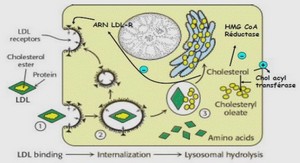Étude de la flexibilité du comportement alimentaire et des capacités d’adaptation
des chèvres laitières
Animals, housing, and diet
Dairy goats (N=24) at the end of their first lactation (245 ± 16 days in milk; DIM) and in the middle of their second gestation (62 ± 15 days post AI) were housed in six groups of four goats. As we were interested in individual feeding behaviour measured within a social environment, we used the smallest group size possible (n=4), as using pairs would have resulted in very long and narrow pens in our experimental set-up. Each group was composed of two Alpine goats and two Saanen goats and was balanced for age, body weight and milk yield at the start of the experiment. The groups were housed in 7.6m² pens with slatted floors and two drinking cups in each pen. Each pen was equipped with four feed stations, accessible via an electronic ear-tag (Gabard, Argentonnay, France), consisting of a trough system fitted on a weigh scale (Baléa, Saint-Mathieu de Tréviers, France). Each goat had access to its own individual feed trough. Photos of the system can be found in Nielsen et al. (under review). A week before the experiment began, to allow social recognition to be established, all the goats were grouped together in a single pen. Daily milkings were reduced from twice to once a day so that, at the start of the data collection, the goats were milked only in the afternoon just before the first feed delivery. This reduction in milking frequency prevented disruptions related to milking other than at the 15:00 h feed delivery time that was common for all periods and treatments. Milking was performed in a rotary milking parlour with a low line at a vacuum pressure of 35kPA, a pulsation rate of 85 pulses/min and a pulsation ratio of 65/35. Raw milk yield was recorded using an automatic device designed for milk recording Chapitre 5 (Article 3) – Capacités d’adaptation 166 in small ruminants developed by INRAE (European patent no. 94916284.6). Individual milk yield and body weight were measured at each milking. The temperature outside the building remained relatively stable throughout the experiment (period 1: mean daily minimal temperature: 6.38 ± 2.41°C, and maximal temperature: 17.4 ± 1.78°C; period 2: 6.38 ± 4.14°C, and 10.2 ± 5.15°C; period 3: 4.16 ± 4.19°C, and 12.9 ± 3.61°C; period 4: 8.15 ± 2.83°C, and 13.0 ± 1.42°C). The animals were fed ad libitum throughout the study, using the same total mixed ration (TMR) as they received before the start of the experiment. The TMR consisted of (on a DM basis) 25% meadow hay, 28% chopped dried alfalfa (Rumiluz, Désialis, Paris, France), 27% pressed sugar beet pulp, 15% commercial concentrate (Fluvialac, Agralys Aliment, Châteaudun, France) and 5% rapeseed meal. The TMR (DM content 54.9%) contained (on a DM basis) 14.1% CP, 4.7% starch, 9.3% ash, 42.8% NDF, 23.7% ADF and 4.7% ADL. Daily quantities of feed offered were adjusted to ensure at least 10% refusals. Due to time and labour constraints at feed delivery, it was not possible to collect and weigh feed spillage on individual basis. Instead, the volume of feed spillage around each trough was visually estimated for each goat once a day, and the total amount of spillage was collected and weighed daily. Based on this total weight and total estimated quantity, the approximate weight of individual spillage was calculated. 2. Frequency of delivery The experiment lasted 29 days divided into four successive periods of seven days each (+1 day in period 1), with feed delivery frequency modified between each period (Figure 1). Measurements for one day started at 15:00 h and ended with the collection of refusals around 15:00 h the next day. All goats had previous experience with the gated feed stations, thus only three days of habituation were necessary at the beginning of the experiment. For each other periods, the first two days were considered as adaptation, and only feeding behaviour data collected during the last five days of each period were used in the analyses. The frequencies of feed delivery in the four periods were: period 1: two deliveries per day Chapitre 5 (Article 3) – Capacités d’adaptation 167 (2xstart) at 15:00 h and 07:00 h; period 2: four deliveries (real or simulated) per day (4x) at 15:00 h, 19:00 h, 23:00 h and 07:00 h; period 3: one delivery per day (1x) at 15:00 h; and period 4: two deliveries per day (2xend) at 15:00 h and 07:00 h. In period 1, when the animals were fed twice a day, the initial quantities delivered were estimated on the basis of the feed intake for each individual during the previous months and then adjusted daily to ensure that there was always at 350 g of TMR left in the trough. Figure 1. Schematic overview of the experimental protocol divided into four successive periods of seven days during which feed delivery frequency was modified. Habituation: habituation to experimental set-up. Adaptation: adaptation to change of feed delivery frequency. 2xstart: two deliveries of fresh feed per day during the first period; 4x4x: four deliveries of fresh feed per day; 4x1x: one delivery of fresh feed + three feed stirrings per day; 1x: one delivery of fresh feed per day; 2xend: two deliveries of fresh feed per day during the last period. Feed was distributed with approximately two-thirds of the daily ration delivered at 15:00 h and one-third at 07:00 h. During period 2, when the animals were fed four times a day, half of the groups received the feed allowance in four portions, with the first portion (at 15:00 h) adjusted in size relative to the total predicted intake for each goat and the other three portions being 1 kg delivered at 19:00 h, 1.5 kg at 23:00 h and 1.5 kg at 07:00 h (4x4x). The quantity offered in these three portions was the same for all goats in order to facilitate the feed delivery at the goat farm and was calculated to allow ad libitum consumption during the four or eight hours until the next feed delivery. The other half of the groups received the total daily feed allowance in one delivery at 15:00 h, followed by three feed stirrings (i.e. the feed remaining in the trough was mixed around manually without addition of fresh feed; 4x1x) carried out simultaneously with the fresh deliveries for the groups on treatment 4x4x (19:00 h, 23:00 h, and 07:00 h). This experimental set-up used each individual goat as its own control by measuring the feeding behaviour for each goat during period 1 with two deliveries per day and returning to this frequency of delivery after the other treatments. The goats remained in the same groups, and all goats in a group received the same treatment. This allowed us to study the effect on individual feeding behaviour of the only environmental change occurring: a change in the feed delivery frequency, allowing us to test treatment effects on feeding behaviour within animal as also recommended by DeVries et al. (2003b).
Intake measurements and determination of meals
The feeding station system recorded the weight of the trough every 2s with an accuracy of 5g. From these data, an algorithm was used to determine periods (referred to as plateaus) when the weight of the trough was stable for at least 10s (Blavy et al., under review). These plateaus indicated that the goat was not interacting with the feed. Between these plateaus the weight of the trough was not stable because the goats interacted with the feed, so-called feeder visits. The plateaus and visits were used to characterise the feeding behaviour of each individual. For this, the visits were grouped into meals using an 8-minute meal criterion (Tolkamp et al., 1998; Cellier et al., 2021), i.e. if the duration of a plateau between visits was less than 8 min, then the visits were merged into one meal. If less than 10g of feed disappeared during a meal, it was considered as a non-feeding visit. From casual observation these occurred when goats used the feeding gates to view the corridor in front of the troughs. The mean daily number of these non-feeding visits was 10.3 (SD=3.52; median: 10; [Q1, Q3]: [8,13]; range: 2-22). In addition, a small number of meals (1%) with negative intakes were excluded, as these were found to be caused by disturbances of the weigh-scale unrelated to feeding. Using this procedure, we determined five variables (see below) to characterize the feeding behaviour of the goats (Nielsen, 1999), while one variable (feeding rate) was determined on a visit basis. As feeding behaviour is the animal engaging with the Chapitre 5 (Article 3) – Capacités d’adaptation 169 fresh feed and the DM content was similar across the experimentation, all feeding behaviour variables are reported in fresh weight. In accordance with previous work (Giger-Reverdin et al., 2020), special emphasis was given to the first meal after the 15:00 h feed delivery, as this delivery was common across all treatments and took place immediately after the once-aday milking.


